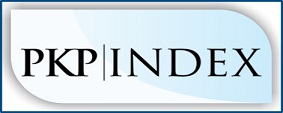The Effect of Realistic Mathematics Approach on Mathematics Learning Outcomes of Junior High School 6 Pekanbaru
Abstract
The purpose of this study was to determine the effect of Realistic Mathematics Approach on the learning outcomes of seventh grade students of Junior High School 6 Pekanbaru with quasi-experimental. There are two classes that will be sampled, namely the experimental and control classes with purposive sampling as a data collection technique. The data collection method used is a test with descriptive and inferential statistical data analysis techniques. Descriptive statistical analysis technique was used to describe the power obtained from the measurement results of the dependent variable, namely learning outcomes, inferential statistical analysis techniques were used to analyze sample data (pre-test and post-test). The results of descriptive statistical analysis showed that the average pre-test for the experimental and control classes were 50.10 and 54.31, while the post-test averages for the experimental and control classes were 76.79 and 68.13. In this study, the data were normally distributed, with a homogeneity value of 0.752 and when tested t the result was 0.002 < 0.05, so it can be concluded that there is an effect of realistic mathematics approach on student learning outcomes.The purpose of this study was to determine the effect of Realistic Mathematics Approach on the learning outcomes of seventh grade students of Junior High School 6 Pekanbaru with quasi-experimental. There are two classes that will be sampled, namely the experimental and control classes with purposive sampling as a data collection technique. The data collection method used is a test with descriptive and inferential statistical data analysis techniques. Descriptive statistical analysis technique was used to describe the power obtained from the measurement results of the dependent variable, namely learning outcomes, inferential statistical analysis techniques were used to analyze sample data (pre-test and post-test). The results of descriptive statistical analysis showed that the average pre-test for the experimental and control classes were 50.10 and 54.31, while the post-test averages for the experimental and control classes were 76.79 and 68.13. In this study, the data were normally distributed, with a homogeneity value of 0.752 and when tested t the result was 0.002 < 0.05, so it can be concluded that there is an effect of realistic mathematics approach on student learning outcomes.
Downloads
References
Arsaythamby, V., & Zubainur, C. M. (2014). How a Realistic Mathematics Educational Approach Affect Students’ Activities in Primary Schools? Procedia - Social and Behavioral Sciences, 159, 309–313. https://doi.org/10.1016/j.sbspro.2014.12.378
Binsar, K., Darius, A., & Adrianus, M. (2011). Budaya Melayu Riau untuk SMP Kelas VII. Solo: Inti Prima Aksara.
Bunga, N., Isrok’atun, & Julia. (2016). Pendekatan Realistic Mathematics Education Untuk Meningkatkan Kemampuan Komunikasi Matematis Siswa. Jurnal Pena Ilmiah, 1(1), 441–450. https://doi.org/10.22460/jpmi.v1i5.p915-922
Martono, N. (2013). Metode Penelitian Kuantitatif. Jakarta: Kencana Prenadamedia Group.
Nunes, T., & Bryan, P. (2000). Learning and Teaching Mathematics, An International Perspective. UK: Psychology Press.
Qian, K. W. (2019). Refugee Education in Another Perspective : the Current State in Malaysia and Its Way Forward. The Bulletin of the Graduate School, Soka University, 153–167.
Rajagukguk, W., & Hazrati, K. (2021). Analisis Self-Efficacy Siswa dalam Penelitian Pembelajaran Matematika dengan Pendekatan Matematika Realistik dan Inkuiri. Jurnal Cendekia : Jurnal Pendidikan Matematika, 5(2), 2077–2089. https://doi.org/10.31004/cendekia.v5i2.761
Rezeki, S., Andrian, D., Wahyuni, A., & Nurkholisah, H. (2020). The sustainability concept of
Riau cultures through development of mathematics learning devices based on Riau folklore at elementary schools. Journal of Physics: Conference Series, 1538(1). https://doi.org/10.1088/1742-6596/1538/1/012066
Sánchez-Compaña, M. a. T., Sánchez-Cruzado, C., & García-Ruiz, C. R. (2020). An
interdisciplinary scientific and mathematic education, addressing relevant social problems such as sexist hate speech. Information (Switzerland), 11(12), 1–16. https://doi.org/10.3390/info11120543
Setyosari, P. (2013). Metode Penelitian Pendidikan dan Pengembangan. Jakarta: Kencana Prenadamedia Group.
Sudaryono. (2016). Metode Penelitian Pendidikan. Jakarta: Prenadamedia Group.
Sugiyono. (2013). Metode Penelitian Kuantitatif, Kualitatif, dan R&D. Bandung: Alfabeta.
Sugiyono. (2015). Metode Penelitian Pendidikan. Bandung: Alfabeta.
Wahyuni, A., & Abadi, A. M. (2014). PERBANDINGAN KEEFEKTIFAN PEMBELAJARAN COOPERATIVE LEARNING TYPE STAD DAN TYPE TPS PADA PEMBELAJARAN BANGUN RUANG SISWA SMP. Jurnal Riset Pendidikan Matematika, 1(2), 164. https://doi.org/10.21831/jrpm.v1i2.2673
Wijaya, A. (2012). Pendidikan Matematika Realistik. Yogyakarta: Graha Ilmu.
Zafrullah, Z., & Zetriuslita, Z. (2021). Learning interest of seventh grade students towards mathematics learning media assisted by Adobe Flash CS6. Math Didactic: Jurnal Pendidikan Matematika, 7(2), 114–123. https://doi.org/10.33654/math.v7i2.1272
Copyright (c) 2021 Astri - Wahyuni, Yaya Sukjaya Kusumah, Surgawi Pertiwi

This work is licensed under a Creative Commons Attribution-ShareAlike 4.0 International License.



1.jpg)














